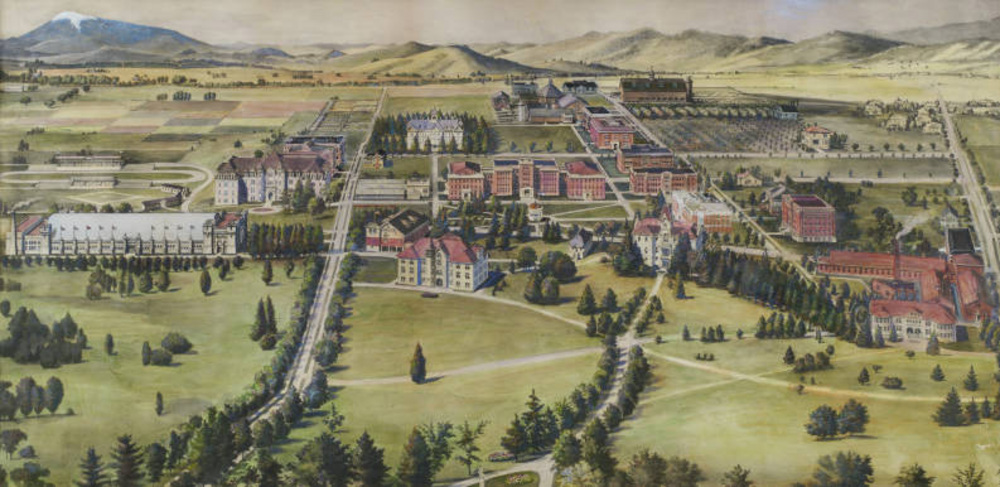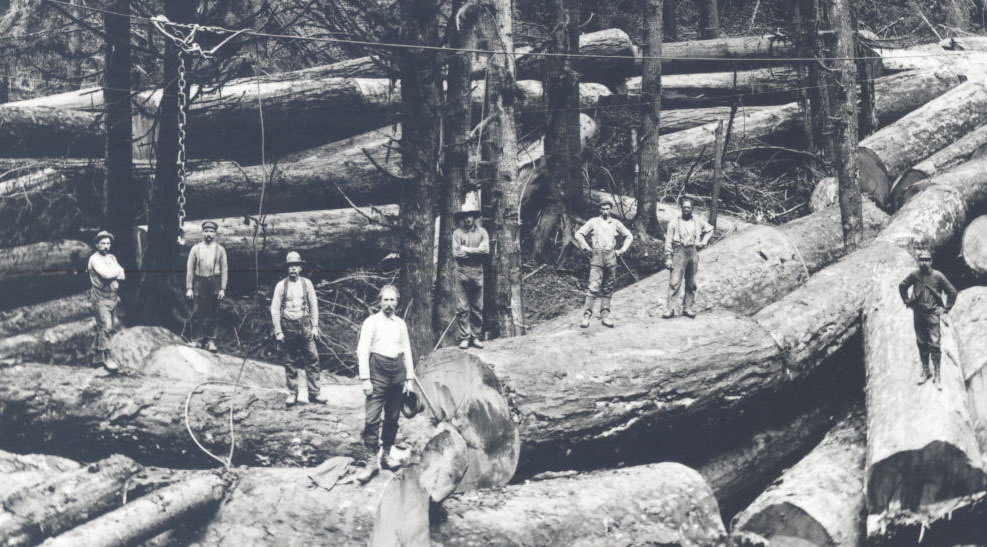The H.J. Andrews Experimental Forest, located deep in the Willamette National Forest, was established in 1948. Originally called the Blue River Experimental Forest, the Andrews is located on the western slope of Oregon’s Cascade Range near the town of Blue River, about fifty-five miles east of Eugene At 15,800 acres, it embraces the entire Lookout Creek drainage, a major tributary of Blue River that flows into the McKenzie River. It is a landscape of narrow valleys, steep mountain slopes, and cascading streams that supports stands of old-growth conifers ranging from four hundred to five hundred years old. It is reminiscent of much of the western slope of the Cascade Range after World War II.
Horace J. Andrews, the forester in charge of Forest Service Region 6 from 1943 to 1951, led the effort to establish the experimental forest as a place to study the effects of logging on forest-stream interactions and downstream flooding. When he was killed in an automobile accident in 1951, Forest Service officials renamed the experimental forest in his honor in 1953. Since Andrews’s death, the Andrews Experimental Forest has become renowned for its researchers’ pioneering work on terrestrial and aquatic ecosystems.
The national and international reputation of the Andrews was related to the publication in 1962 of Rachel Carson’s Silent Spring, the growth of environmentalism, and the participation of Andrews Experimental Forest researchers in the International Biological Program during the mid-1960s. The IBP introduced principles of ecosystems research to the Andrews and brought hundreds of scientists to the experimental forest’s residential and office facilities on lower Lookout Creek. Over the years, Andrews scientists moved seamlessly from the IBP to the forest’s National Science Foundation’s designation in 1980 as one of its original six Long-Term Ecological Research sites. Since then, the NSF has consistently renewed funding for long-term research in the Andrews. Scientists also rely on an array of other funding sources.
Despite the experimental forest’s acclaim, few people in Oregon know about the Andrews. On Highway 126 is a sign directing people to the Blue River Reservoir. Beyond the reservoir, visitors are directed to the H.J. Andrews headquarters, a large compound with a dormitory, eleven apartments, conference and dining halls, classrooms, laboratories, a library, and a covered seasonal pavilion. The absence of signage on the highway helps protect the forest’s research sites.
Among the early investigations on the Andrews, none would have greater significance than watershed studies. An original purpose of the experimental forest was to better understand the relationship between logging practices and healthy watersheds, and investigations were conducted on three small watersheds near the mouth of Lookout Creek to study stream fluctuations, water quality, snow accumulation, and moisture in the soil. The investigations had implications for Oregon industries and citizens in determining the best ways to maintain healthy streams and maximize water available for downstream agriculture, recreation, and other uses.
The focus of research on the Andrews has changed over the years. During the post-World War II building boom, scientists focused on how to economically and effectively replace old-growth stands with fast-growing young trees. During the 1970s, the forest became a center for ecosystem studies, research into the elements that comprise healthy forests and streams. By the 1980s, the Andrews began playing a prominent part in the importance of old-growth forests; endangered species, such as the Northern spotted owl; and healthy watersheds. The science on Lookout Creek became a major factor in land-management and policy decisions regarding leaving woody debris in streams and a host of other strategies.
Lightning struck the north slope of Lookout Mountain on August 5, 2023, an area of steep terrain and dense vegetation that made it unsafe for ground crews to fight the blaze. The fire spread rapidly, eventually burning 70 percent of the experimental forest, despite the efforts of fire crews and water-dousing aircraft. The place where scientists studied disturbances now confronted the mother of all disturbances, a wildfire that would pause the collection of data in some areas and affect every facet of research in the forest. When fall rains slowed the fire in late September, Seattle Times reporter Lynda Mapes reported that the fire marked a “turning point for the H. J. Andrews Experimental Forest, one of the most studied forests in the world.”
The Lookout drainage today reveals a mosaic—large green patches areas of reddish brown with moderate damage, and the severely burned north and south-facing slopes on Lookout Mountain. Matt Betts, principal investigator for a Long Term Ecological Research grant in the Andrews, believed the vast stores of data collected before the fire underscored the need to “collect data afterwards.”
Two years after the fire, Brooke Penaluna, lead Forest Service scientist on the Andrews, noticed a greater appreciation for fire: “I think our new normal is living alongside fire and researching along fire.” Mark Harmon, former principal investigator and emeritus professor at Oregon State University, argued that the forest was “not lost. It’s changed.” Although his research plots burned, new investigations may “be more exciting than ever.” There was much to learn, he said, “as long as you throw out everything you think you knew about fire.”
Wildfires on the wet, western side of the Cascades are now part of what some researchers have called a “New Normal.” Climate models indicate that conditions for large wildfires will become more frequent, and rising temperatures have contributed to reduced snow levels in the mountains. Summers are becoming longer, warmer, and drier. The Andrews and its scientists’ long-term studies may help navigate those changes.
-
![]()
Upper Blue River, 1937.
Courtesy Oregon State University Libraries
Related Entries
-
![Oregon State University]()
Oregon State University
Oregon State University (OSU) traces its roots to 1856, when Corvallis …
-
![Timber Industry]()
Timber Industry
Since the 1880s, long before the mythical Paul Bunyan roamed the Northw…
-
![Willamette National Forest]()
Willamette National Forest
The Willamette National Forest stretches along the western slope of …
Map This on the Oregon History WayFinder
The Oregon History Wayfinder is an interactive map that identifies significant places, people, and events in Oregon history.
Further Reading
Max Geier, Necessary Work: Discovering Old Forests, New Outlooks, and Community on the H. J. Andrews Experimental Forest, 1984-2000, USDA, Forest Service, Pacific Northwest Research Station, General Technical Report, PNW-GTR-687 (March 2007).




